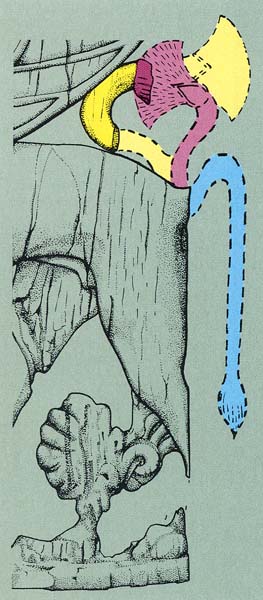Image Details

Whose hindquarters? Damage to the rear part of the ivory shown on the cover and in this article makes it difficult to determine whether it is indeed a cherub. The delicate figure has a human face, eagle’s wings and lion’s frontquarters—but where’s the bull? Elie Borowski points out that in Near Eastern iconography lions’ tails are represented as rising straight up and then looping over the creature’s back, as in the ivory sphinx. But our figure was carved with lotus blossoms (the two reconstructed flowers are shaded light yellow and light purple; darker shades of those colors indicate sections of the ivory that remain intact) above its rear, leaving no room for a lion’s tail. More likely, the tail (blue) rose up slightly and then dropped straight down, like a bull’s tail (see the cherub in the bronze cult stand).
